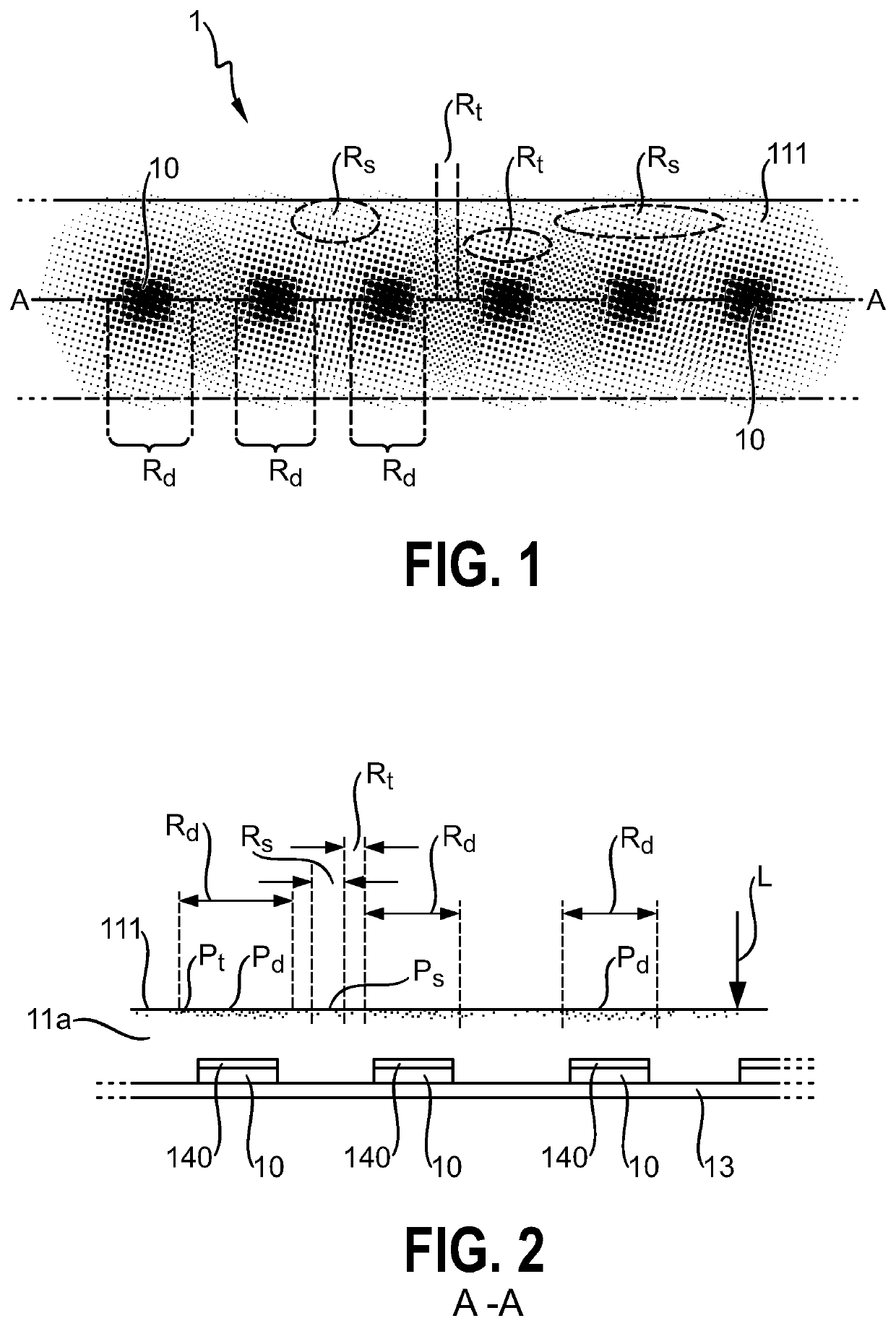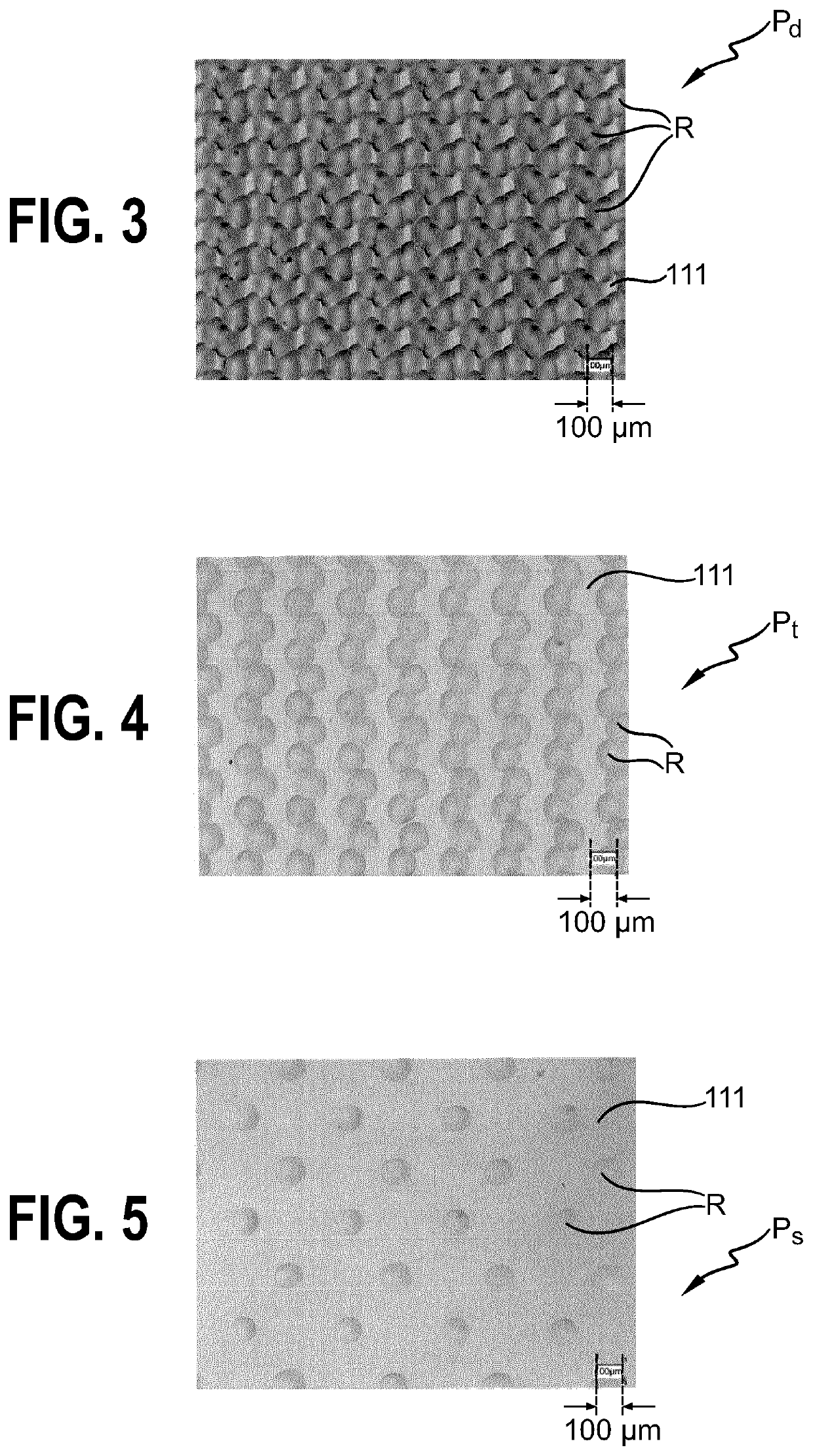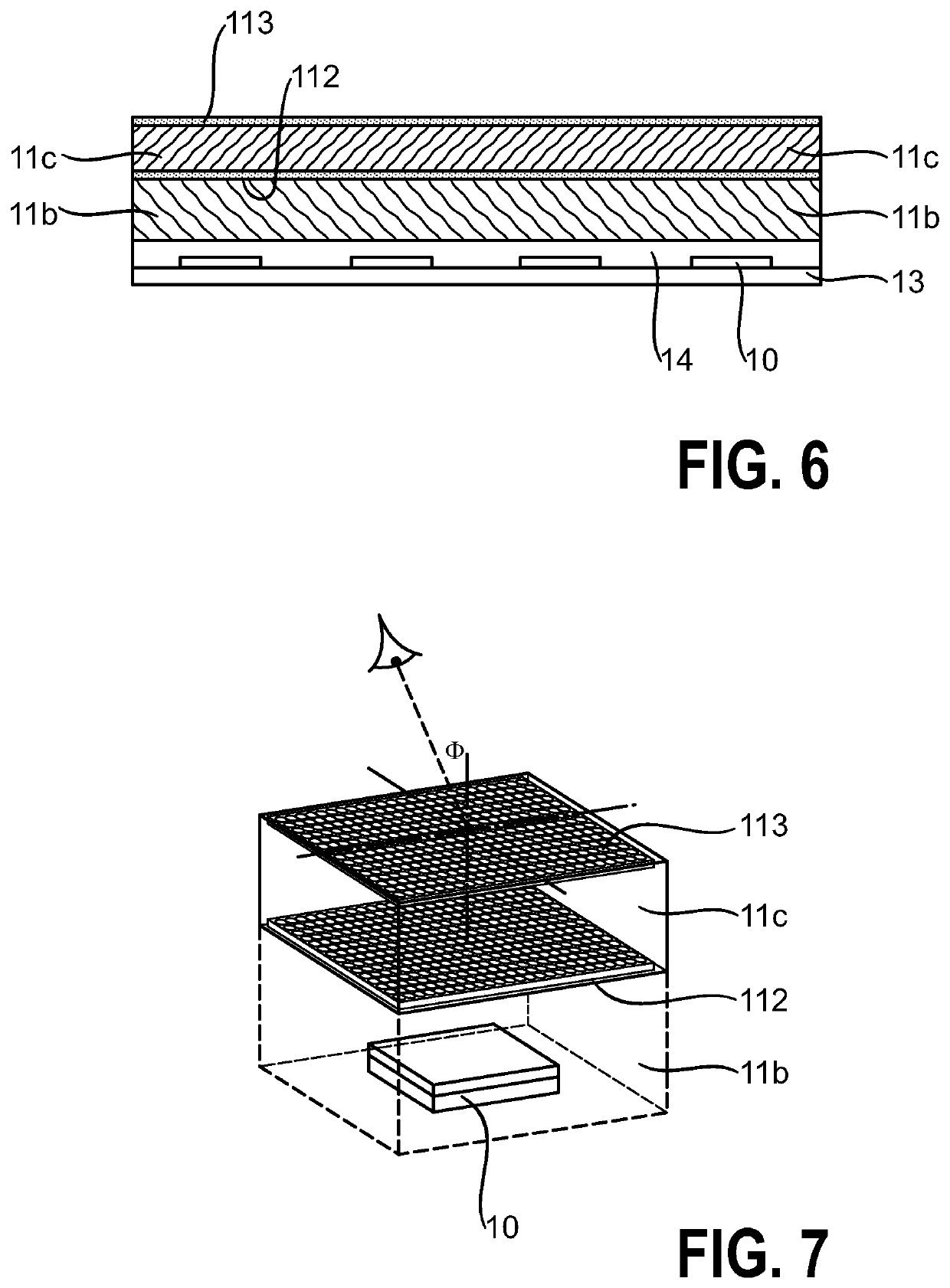Method of manufacturing an LED module
a manufacturing method and led module technology, applied in the direction of basic electric elements, electrical apparatus, semiconductor devices, etc., can solve the problems of unsuitable flexible led modules, titanium dioxide reduces the flexibility of silicone encapsulants, and unnecessary light loss in any region that is not in direct proximity, etc., to achieve fine control, improve the effect of encapsulant layer surface stability, and improve the effect of encapsulant flexibility
- Summary
- Abstract
- Description
- Claims
- Application Information
AI Technical Summary
Benefits of technology
Problems solved by technology
Method used
Image
Examples
Embodiment Construction
[0032]FIG. 1 shows a schematic representation of a view onto the light output surface 111 of an LED module 1 according to the invention. The LED module 1 comprises a series of LEDs 10 arranged in series on a carrier (not shown). The LEDs 10 are spaced apart by a certain pitch P. In this exemplary embodiment, the light output surface 111 is the uppermost surface 111 of a translucent encapsulant 11. The diagram indicates the outline of the LED dies 10 as seen through the transparent encapsulant. Scattering patterns Pd, Ps, Pt with different densities have been formed in specific regions Rd, Rs, Rt of the uppermost surface 111 to a depth of a few microns. The diagram schematically indicates the different pattern densities in the different regions Rd, Rs, Rt. Directly over an LED 10 and extending beyond the contours of the LED die, the scattering pattern Pd is dense. At the outer regions of the module's light output surface, the scattering pattern Ps is sparse. Between these regions, a ...
PUM
| Property | Measurement | Unit |
|---|---|---|
| wavelength | aaaaa | aaaaa |
| thickness | aaaaa | aaaaa |
| thickness | aaaaa | aaaaa |
Abstract
Description
Claims
Application Information
 Login to View More
Login to View More - R&D
- Intellectual Property
- Life Sciences
- Materials
- Tech Scout
- Unparalleled Data Quality
- Higher Quality Content
- 60% Fewer Hallucinations
Browse by: Latest US Patents, China's latest patents, Technical Efficacy Thesaurus, Application Domain, Technology Topic, Popular Technical Reports.
© 2025 PatSnap. All rights reserved.Legal|Privacy policy|Modern Slavery Act Transparency Statement|Sitemap|About US| Contact US: help@patsnap.com



